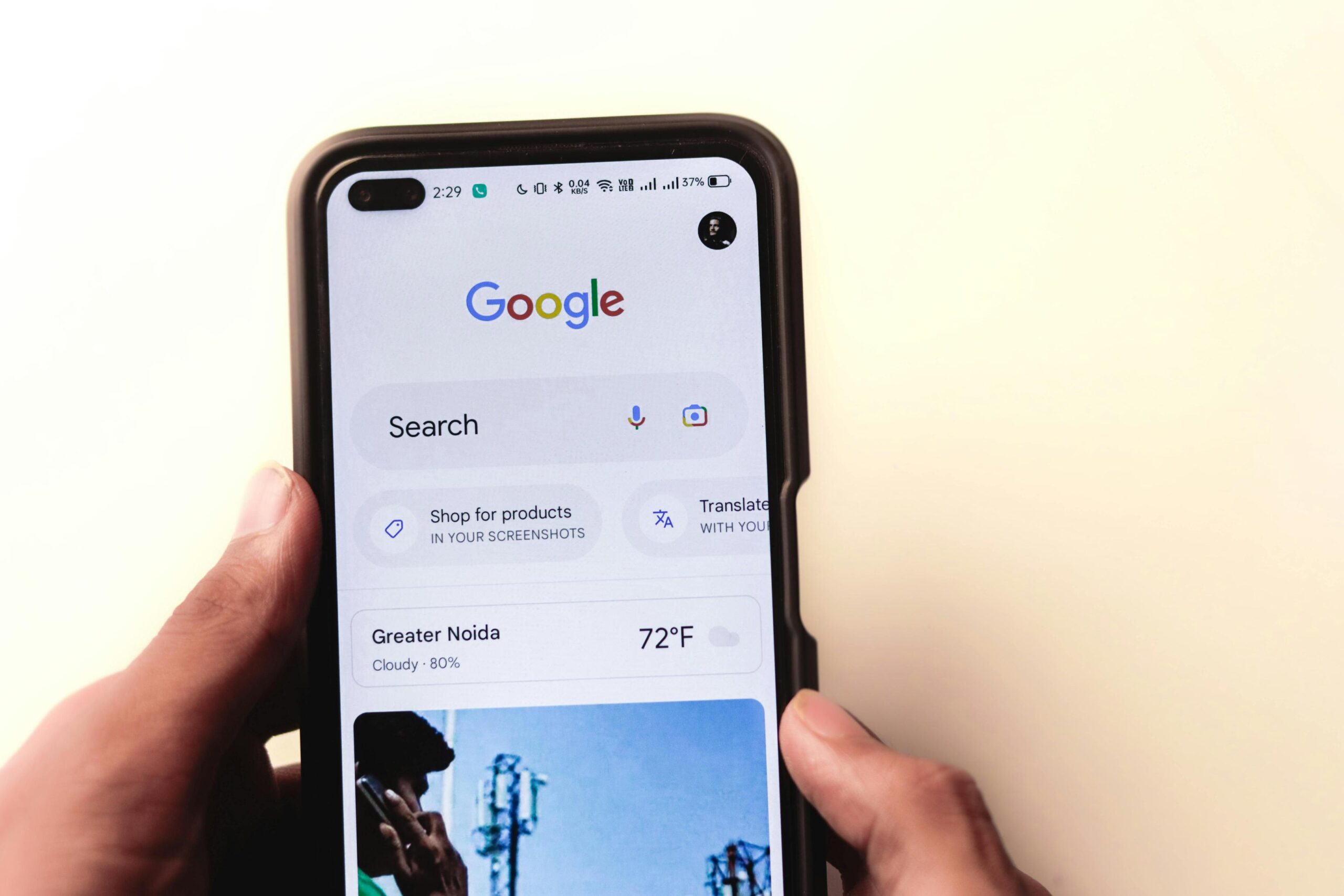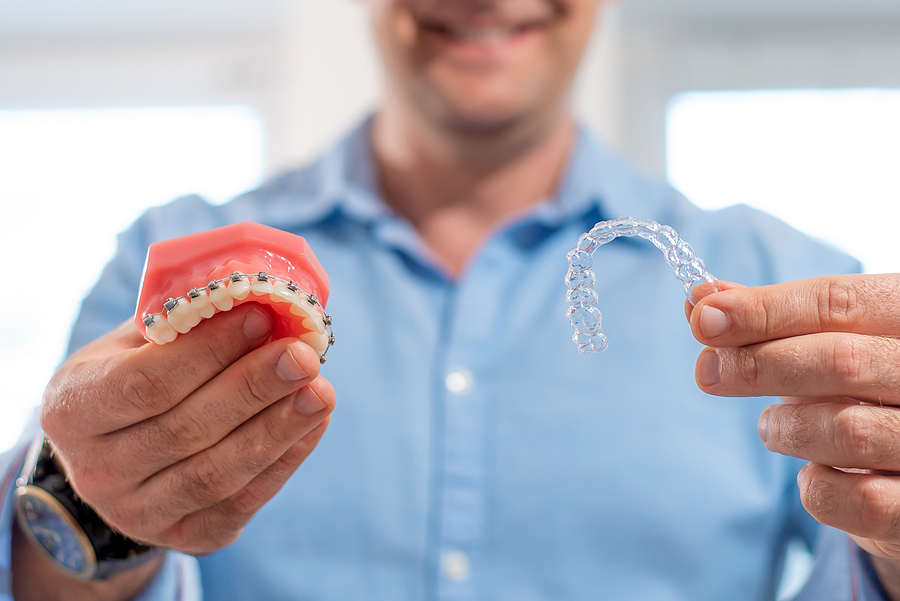In today’s digital-first world, your orthodontic practice’s website isn’t just a brochure — it’s often the first and only impression new patients get. A clean, functional site backed by strong orthodontic SEO helps you show up in search results and convert visitors into booked appointments. Without it, your practice can easily be overlooked, even if you’re the most experienced orthodontist in town.
Patients now expect more than contact information. They want real-time booking, trust-building visuals, and clear answers to their questions. If your website doesn’t meet those expectations, someone else’s will. The features listed below are essential to keep your practice competitive and visible online.
Let’s start with the foundation: design and speed.
1. Mobile-First Design and Fast Load Speed
A website that doesn’t work well on a phone will cost you patience. Most orthodontic searches happen on mobile devices, and users are quick to click away from sites that lag or look broken. Your site needs to load fast and look sharp, no matter what device it’s viewed on.
Why Mobile Design Matters
- Google ranks mobile-friendly websites higher in search.
- People won’t zoom or scroll sideways to book an appointment.
- A smooth mobile experience builds trust with first-time visitors.
What Your Developer Should Include
- Responsive design: Your layout should automatically adjust to any screen size.
- Compressed images: High-resolution visuals that don’t slow down load time.
- Lazy loading: Images and videos load only when users scroll to them, which keeps things quick.
- Mobile-first UI: Buttons, forms, and menus should be easy to tap and use.
Fast Load Speed is Non-Negotiable
Every second counts. Slow websites lead to higher bounce rates, and search engines take notice. To keep load time low:
Minimise the use of heavy scripts and animations.
Use a reliable hosting platform.
Optimise your homepage to load essential elements first.
If your website fails to meet these standards, even strong orthodontic SEO won’t be enough to keep users on the page. A slow or clunky site undercuts everything else you’re doing to get found online.
2. SEO-Optimized Content and Keyword Strategy
Search engines can’t rank your website correctly without the right content. And patients won’t stay on your site if the content doesn’t answer their questions. That’s where SEO comes in. Strong orthodontic SEO is what connects your services to the people searching for them. It’s not just about stuffing in keywords — it’s about making your website practical, clear, and relevant.
Why SEO Content Matters for Orthodontists
- It helps you rank for terms like “braces near me” or “Invisalign for teens.”
- It makes your site more helpful to patients searching for answers.
- It signals to Google that your site deserves visibility.
Essentials for On-Page SEO
Each page on your website should be based on a specific treatment or topic. This helps users and search engines understand what each page is about.
Here’s what to include:
- A single H1 heading that clearly describes the page topic
- Keyword-rich subheadings (H2s and H3s)
- Internal links to related services and blog posts
- Alt text on all images
- Short, easy-to-read paragraphs
Don’t Forget Metadata and Structure
Write unique meta titles and descriptions for every page.
Use clean URLs (e.g., /invisalign-smithtown instead of /page123).
Add structured data to improve the appearance of your pages in search results (especially for FAQs and reviews).
A well-optimised orthodontic website doesn’t just help you show up on Google — it gives potential patients the answers and confidence they need to take the next step. Focus on clarity, structure, and intent with every page, and your orthodontic SEO efforts will pay off.
3. Location Pages and Local SEO Enhancements
If you want to show up for searches like “orthodontist near me” or “braces in [your city],” your website needs strong local signals. This is where local SEO for orthodontists becomes essential. It’s not enough to have one generic homepage — you need location-specific content that speaks directly to the communities you serve.
What Are Location Pages?
Location pages are dedicated web pages for each city or area where your practice operates. These pages help you appear in local search results and improve visibility in maps and directories.
A strong location page should include:
The city or town name in the title, headings, and content
A short description of your services specific to that area
Office address, phone number, and hours
Google Maps embed
Patient testimonials from that location
Optimizing for Local SEO
To support your location pages, your overall website should also follow key local SEO strategies:
Keep your practice name, address, and phone number (NAP) consistent across the site and directories
Claim and fully complete your Google Business Profile
Use local schema markup to help search engines understand your business
Earn reviews from patients on Google and health-related directories
Why This Matters
Most orthodontic patients search with local intent. They’re looking for someone nearby they can trust. When your site is built to support local SEO for orthodontists, it increases your chances of appearing in Google’s local pack and map results — the spots that get the most clicks.
Without this setup, even the best content or offers can go unseen by people in your area. Local visibility is the bridge between being found and getting booked.
4. Secure Online Booking System
Patients don’t want to call or wait for office hours just to schedule an appointment. An online booking system makes your site more convenient and increases conversion rates. It also shows that your practice is modern and efficient.
What Patients Expect from Online Booking
People want a fast, simple process that works on any device. They should be able to:
View available time slots in real time
Choose their preferred date and time
Book without needing to call
Receive confirmation instantly
If any of these steps are confusing or slow, they’re likely to leave your site and look elsewhere.
Features Your System Should Have
To meet expectations and protect patient data, your booking system should include:
A HIPAA-compliant platform
Mobile compatibility
Automated confirmation emails and text reminders
Integration with your internal scheduling system
Optional pre-consultation forms to save time at check-in
Why It Affects Your Bottom Line
An easy-to-use booking system reduces no-shows, saves staff time, and keeps your schedule full. When paired with orthodontic SEO, it ensures that the traffic coming to your site can convert quickly. If users have to wait or call to book, you lose momentum—and likely the appointment.
5. Professional and On-Brand Visual Design
The look and feel of your website has a direct impact on how potential patients view your practice. If your site looks outdated, cluttered, or unprofessional, it sends the wrong message even if your clinical care is excellent. Good design builds trust quickly and keeps users engaged.
Why Visual Design Matters in Orthodontics
Visitors judge credibility within seconds
A clean layout helps users find what they need
Your brand visuals should reflect the quality of your care
Key Elements to Include
To create a polished and consistent look across your website, focus on:
Consistent branding: Use your logo, brand colours, and font styles throughout the site
High-quality images: Showcase real team members, your office, and actual patient smiles
Simple layouts: Avoid clutter. Use whitespace to highlight CTAs and key info
Legible fonts: Choose sizes and colours that are easy to read on all devices
Build a Connection with Visuals
Real photos outperform stock images. Patients want to see your office and your team and know what kind of experience they can expect. Show smiling faces. Highlight your treatment rooms. Display before-and-after images with permission.
Visual branding should make people feel confident about contacting you. Combined with strong orthodontic SEO, good design ensures people find your website and feel comfortable staying on it.
6. Patient Testimonials and Video Reviews
Social proof is one of the strongest ways to earn trust online. When potential patients see others sharing positive experiences, it makes them feel more confident choosing your practice. That’s why testimonials and video reviews should be a central part of your website.
Why Testimonials Work
They show real results from real people
They answer unspoken concerns about quality and comfort
They reduce hesitation for first-time patients
What to Include
You don’t need dozens of reviews just a few well-placed and authentic ones. Make sure to:
Display written testimonials with names and photos (if permitted)
Include reviews from Google, Facebook, or Healthgrades
Add a rotating slider or scrollable section to highlight multiple voices
Use review schema so stars show up in search engine snippets
Add Video for More Impact
Short video testimonials go even further. They give visitors a sense of your office environment and help them connect with your team. Ideal clips include:
Patients describing their treatment journey
Parents sharing experiences with child orthodontics
Post-treatment interviews showing results
Video also boosts time on site and supports orthodontic SEO when optimised with proper titles, tags, and transcripts.
Positive reviews are not just nice to have — they directly affect conversions. Let your happy patients do the talking.
7. Conversion-Driven Calls-to-Action (CTAs)
Once someone lands on your site, you only have a short window to guide them toward action. That’s what a clear, well-placed call-to-action does. It tells the visitor what to do next and makes it easy to follow through.
What Makes a CTA Effective
A good CTA is direct, visible, and consistent. It should match the intent of the page and encourage visitors to take the next step. For an orthodontic website, that often means:
Schedule a Consultation
Book Online Now
Request an Appointment
Call Our Office Today
These should appear on:
The homepage banner
Treatment pages
Blog posts
Location pages
The website footer
Design That Gets Clicks
Use a colour that stands out from the rest of your design
Keep the text short and action-focused
Use buttons instead of plain text links
Make sure buttons work well on mobile
More Than Just One Option
Not every visitor is ready to schedule. That’s why it helps to include secondary CTAs too, like:
Download Our New Patient Guide
See Before & After Cases
Watch a Patient Testimonial
Every page should have a clear goal. While strong orthodontic SEO brings in visitors, CTAs help ensure those visits lead to action, not just clicks.
8. Blog and Educational Resource Centre
A well-maintained blog does more than fill space. It helps you rank for long-tail keywords, answer patient questions, and support your orthodontic SEO strategy. It also builds authority and shows that your practice is active and informed.
Why Blogging Matters for Orthodontists
It drives organic traffic from people asking treatment-related questions
It increases time spent on your website, which helps with SEO
It gives you a place to share updates, tips, and essential info for patients
What to Write About
Your blog should focus on real concerns and curiosities patients have. Useful topics include:
“How Long Do Braces Take to Work?”
“What to Expect After Getting Invisalign”
“Best Foods to Eat With Braces”
“What Age Should My Child Visit an Orthodontist?”
These posts help you show up in search results when people type in specific questions — a key part of strong orthodontic SEO.
Structure That Supports SEO
To make sure your blog content works well:
- Use headings (H2, H3) with target keywords
- Break up text with bullet points and short paragraphs
- Include internal links to service pages and location pages
- Add alt text to any images
- Write a clear meta title and description for each post
A strong blog helps visitors find answers and stay engaged, and gives search engines more reasons to show your website to local patients.
9. Analytics, Tracking, and Lead Conversion Tools
Having a website is only part of the equation. You also need to know what’s working, what’s not, and how people interact with your site. That’s where analytics and conversion tracking come in. Without them, you’re guessing — and that slows down growth.
Why Tracking Matters
See where traffic is coming from
Identify pages that convert (or don’t)
Spot drop-offs in the booking process
Measure the impact of your orthodontic SEO and ads
Tools You Should Be Using
To understand your website performance, make sure these tools are set up:
Google Analytics 4 tracks page views, traffic sources, and behaviour
Google Search Console – shows keyword rankings and technical issues
Heatmaps (like Hotjar) – show where users click and scroll
Call tracking numbers – tie phone calls to specific campaigns or pages
Conversion tracking – monitor completed bookings, form submissions, and downloads
Set Up Goal Tracking
You should have clear goals set up in your analytics dashboard, such as:
Booking confirmations
Contact form completions
Clicks on call buttons
Video views or guide downloads
This data helps you understand if your site is doing its job — bringing in qualified leads and converting them. It also shows how your orthodontic SEO and ads are performing over time. Without tracking, it’s impossible to improve with confidence.
10. Integration with Orthodontic Marketing Platforms
Your website shouldn’t operate in isolation. It needs to work smoothly with the tools and platforms that support your orthodontic marketing. When everything is connected, it’s easier to manage leads, stay in touch with patients, and keep your marketing efforts consistent.
What to Integrate
Here are key platforms and tools that should be linked to your site:
CRM systems (like DentalMonitoring or SmileSnap)
Automatically collect lead info, track consultations, and follow up with patients.
Email marketing tools (like Mailchimp or Klaviyo)
Capture email addresses through forms and send automated messages for follow-ups, promotions, or appointment reminders.
Review management platforms
Prompt patients to leave reviews post-treatment and manage feedback all in one place.
Retargeting tools
Install Facebook Pixel and Google Ads tags to show ads to people who’ve visited your site but haven’t booked yet.
How It Helps
Saves your team time by automating manual tasks
Creates a consistent experience for new and existing patients
Keeps lead information organized and accessible
Strengthens follow-up and conversion strategies
This is where working with an orthodontic marketing agency can make a real difference. They can help connect the right tools, track results, and improve campaign performance across the board.
When everything from your forms to your ads is in sync, it supports your orthodontic SEO by creating a better user experience — and a more efficient workflow for your practice.
Bonus Tip: Use Paid Advertising Strategically
While organic search brings steady traffic over time, paid ads can help you reach potential patients much faster. When used correctly, orthodontic advertising supports your SEO and fills gaps in visibility — especially for new practices or competitive markets.
Where to Advertise
Google Ads: Target people actively searching for treatments like “Invisalign near me” or “braces for teens.”
Facebook and Instagram: Use visual ads to promote special offers or introduce your team and office.
YouTube: Run short video ads before related dental or health content.
How to Make Paid Ads Work
Match your ad headlines to keywords you already target through orthodontic SEO
Link ads to specific landing pages, not just your homepage
Use clear CTAs like “Book a Free Consultation” or “See Our Invisalign Results”
Monitor performance weekly and adjust budget or targeting based on what converts best
Tracking Is Key
Always use conversion tracking to measure what happens after someone clicks an ad. That includes:
Form completions
Phone calls
Booking confirmations
When paid campaigns work with your existing SEO and site structure, they don’t just bring traffic — they bring qualified leads. Orthodontic advertising helps you stay visible, competitive, and in control of your marketing results.
FAQs: Orthodontist Website Essentials
1. What is orthodontic SEO and why is it important?
Orthodontic SEO is the process of optimizing your website so it ranks higher in search results for terms related to orthodontic care. It helps people in your area find your services when they search for treatments like braces or Invisalign. A well-optimized site brings in more organic traffic, leading to more new patient inquiries.
2. How does local SEO help orthodontic practices attract patients?
Local SEO focuses on helping your practice appear in searches specific to your geographic area. This includes showing up in Google Maps results and local listings. It’s essential because most patients search for providers near them. Local SEO for orthodontists improves visibility for those location-based searches.
3. Should I work with an orthodontic marketing agency to build my website?
If you want to save time and ensure everything is done correctly, working with an orthodontic marketing agency can be a smart move. They understand how to structure websites, write content that converts, and implement tools that support growth. Many also offer ongoing support and performance tracking.
4. What’s the difference between organic SEO and orthodontic advertising?
Organic SEO helps your site rank naturally over time through strong content and structure. Orthodontic advertising uses paid ads to appear at the top of search results or in social feeds. Both are effective, but they work best when used together.
5. How often should I update my website content?
Update your website regularly — especially your blog and service pages. Add new content every month if possible. Keep info like office hours, team bios, and treatment options current to maintain trust and stay competitive.
Start Growing Your Orthodontic Practice with Confidence
Your website is a core part of your marketing foundation. But turning that site into a patient-generating tool takes more than just great design — it requires strategy, content, SEO, and performance tracking that work together.
That’s where Ortho Marketing comes in.
As the leading orthodontic marketing agency, we help practices like yours build a strong digital presence and attract more of the patients you want. Our team handles everything from SEO and ads to website development and lead tracking, so you can focus on what matters most — your patients.
Let’s talk about how we can help your practice grow.
Contact Ortho Marketing today to schedule a strategy call with our experts. No pressure. Just real solutions that move your practice forward.







